This post shows students and new users how to factory reset Windows 11 using the recovery mode in the GUI and from the command prompt or terminal console.
Windows 11 built-in ‘Reset‘ feature helps you restore all system settings, apps, and files and bring your PC back to a default state like new.
There are several reasons why someone might want to factory reset Windows 11. Here are a few common ones:
- Fixing a slow or unresponsive computer: If your Windows 11 PC is running slow or not responding properly, resetting it to its default settings can often help improve performance.
- Removing personal information: If you plan to sell or donate your computer, resetting it to its factory settings can help remove your personal information from the device.
- Restoring a computer after an incident: In some cases, your Windows 11 computer may experience an incident, such as a malware attack or system crash. In these situations, resetting the device to its factory settings can often help restore it to a stable state.
Overall, factory resetting Windows 11 can be a useful tool for maintaining and restoring your computer and can help improve its performance and security.
To get started with resetting Windows 11, follow the steps below:
Reset Windows 11 from the System Settings App
One way to reset Windows 11 to the default new state is via the systems settings app. Use this method if you can still access Windows and navigate the System settings easily.
Click Start and select Settings, as shown in the image below.
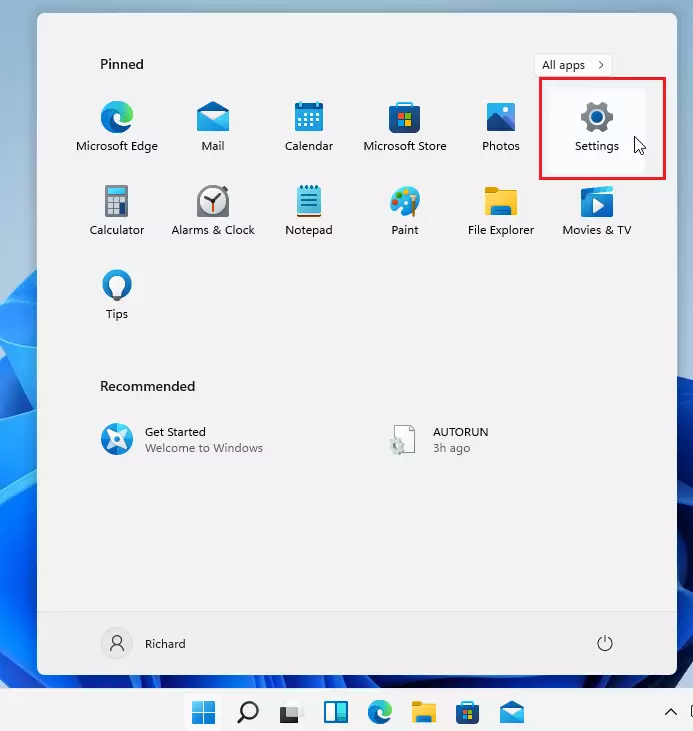
In the Systems Settings app, locate the sidebar on the left and click “System.” In the options to the right of the window, select “Recovery.“
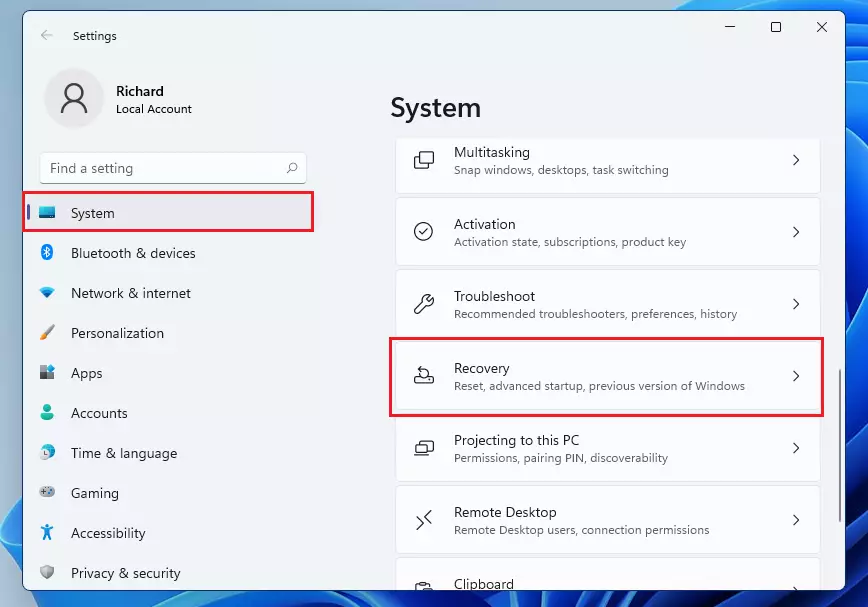
Click the “Reset this PC” button on the Recovery settings page, which is highlighted in the section below.
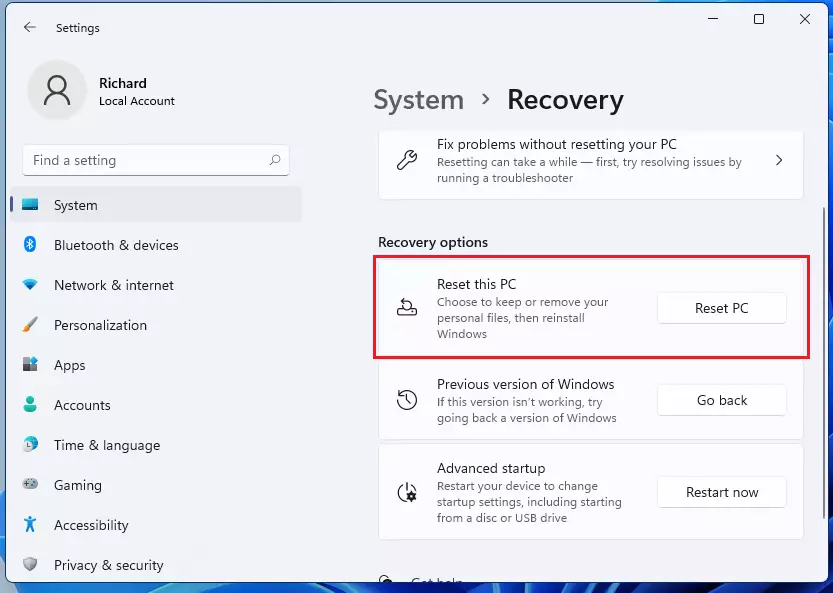
When you click the Reset button, a separate window will appear.
- Keep my files: Use this option to keep your files, but remove apps and settings installed since you first signed into it. This is a safer and fastest reset option. It may also resolve many issues.
- Remove everything: This option will remove all your files, programs, and apps and roll back your machine to a new state. Use this option if the above option doesn’t resolve your issues.
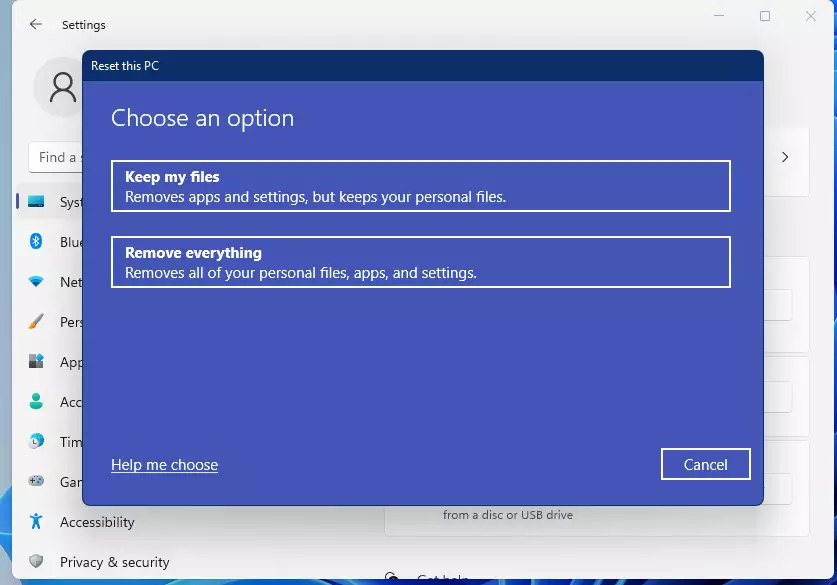
For this post, we’re going to be removing everything.
The next screen will bring up two options.
Cloud download: This option assumes you have an internet connection and your PC is connected. Choose this option to download and reinstall Windows.
Local reinstall: Use this option if you have the original disc or have Windows 11 on a local disc to use.
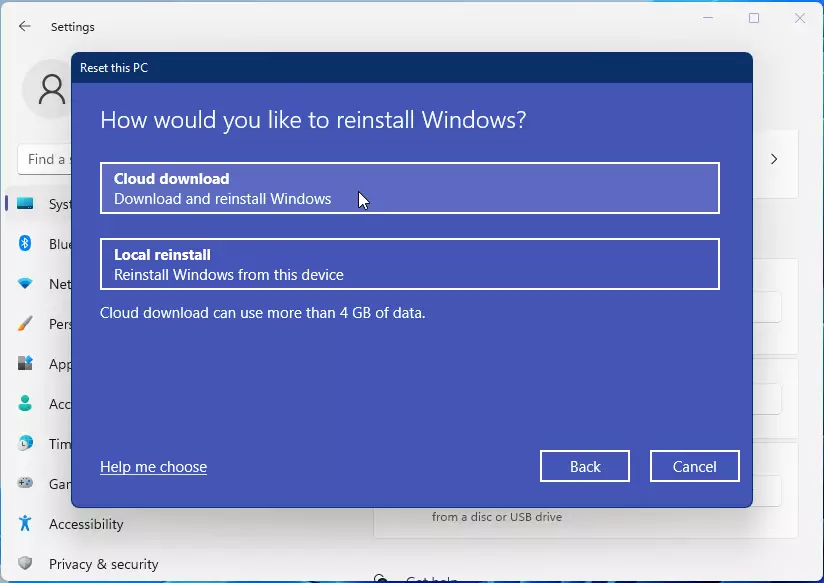
On the next screen, select Change settings for additional settings changes.
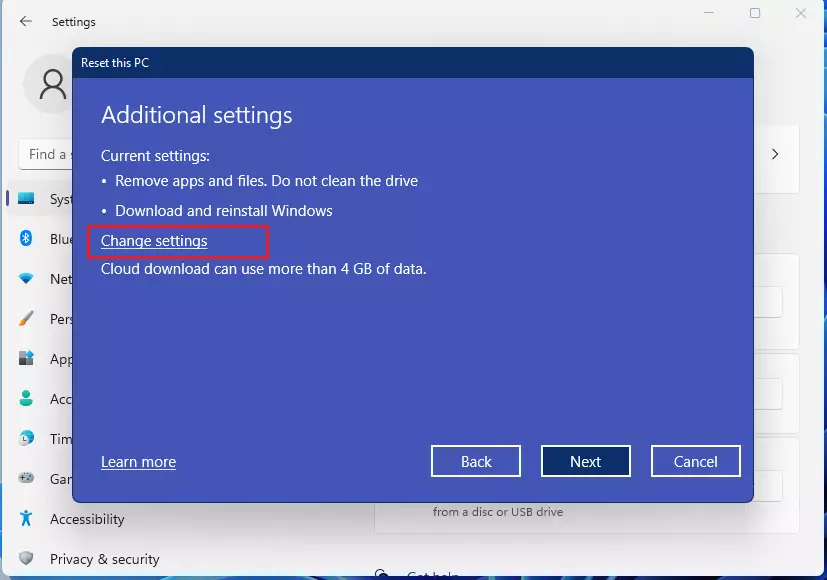
There are more options here.
Clean data: Use this option if you are donating or giving away your PC and want to delete only your files and data. It is quicker but less secure.
Confirm and continue.
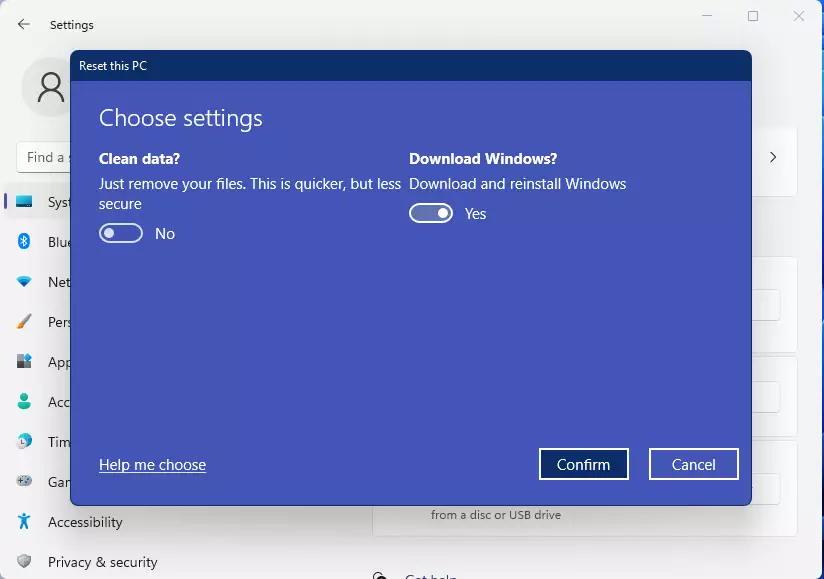
Click Next to continue with the reset.
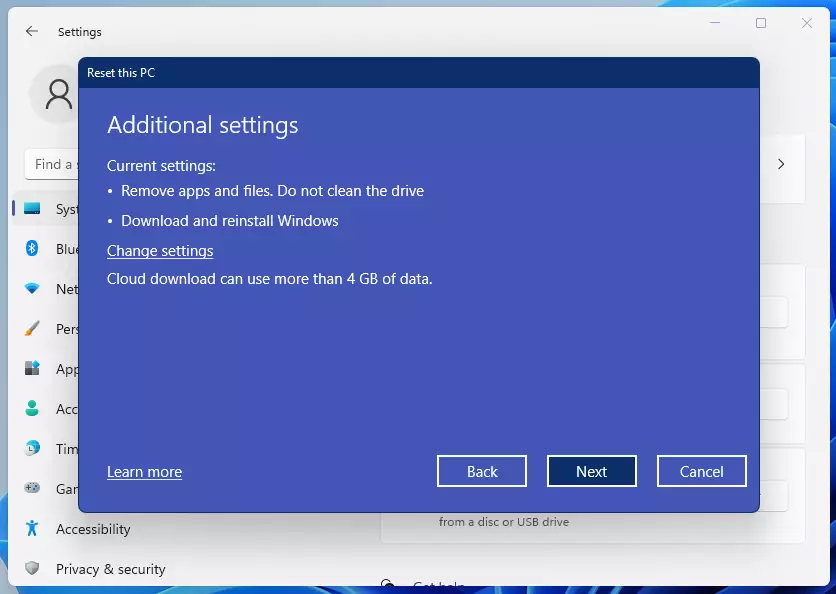
At the end of the wizard, click the Reset button to begin. The options selected above will:
- Remove all the personal files and user account on this PC
- Remove any changes made to the settings
- Remove all apps and programs
- Download and reinstall Windows
This will take a while, so grab a coffee and wait.
When you’re ready to begin, click the Reset button.
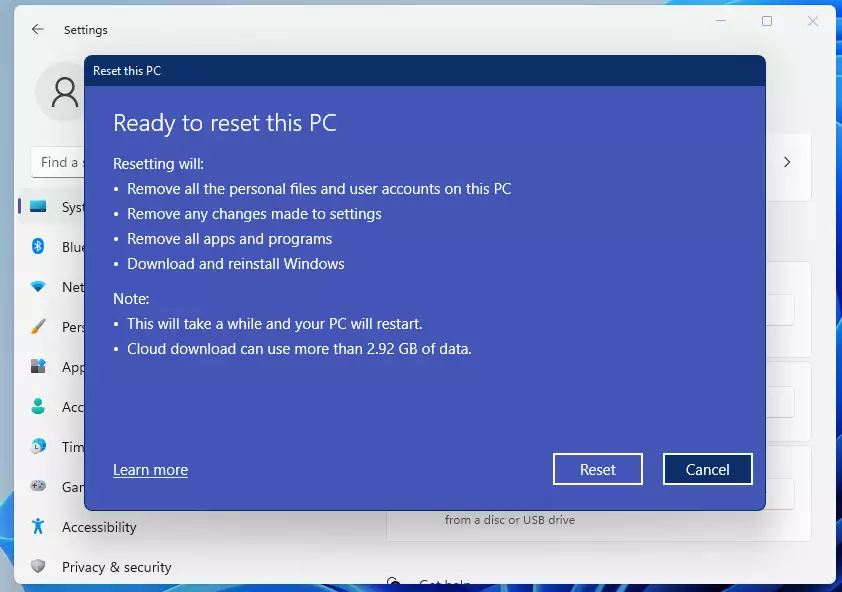
Reset Windows 11 from the Command Prompt
Another way to reset Windows 11 is to use the Windows Command Prompt as administrator. To do that, type ‘Command Prompt’ in the Windows Search bar, right-click the Command Prompt app from the search results and select Run as administrator.
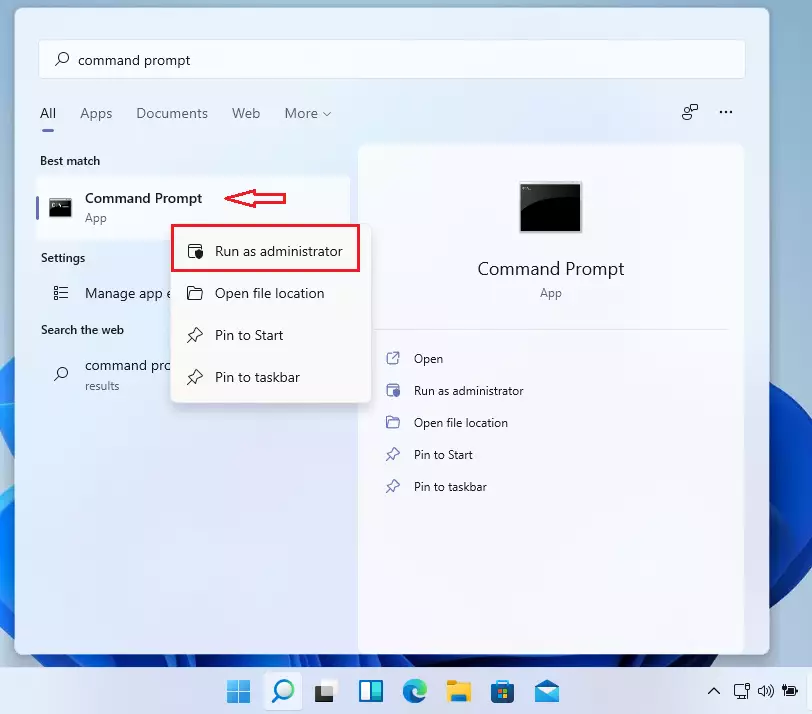
When the command prompt opens, run the commands below to initial Windows reset.
systemreset --factoryreset
That should launch the Windows reset wizard with an option to choose the type of reset to perform. Here, you can remove apps and settings but keep your files or remove everything, including your files, apps, and settings.

If you’re selling your computer, you’ll want to choose an option to remove everything. If you simply want to reset Windows to its defaults without losing your files and settings, select an option to keep your files.
If you remove everything, it may take significantly longer to complete, but this will ensure that all your data are erased and cleaned.

A typical laptop computer might take up to 5 hours to complete the option to remove files and clean the drive. This option will make it harder for someone to recover your deleted files, so it is best to select if you’re recycling or selling your computer.
If you’re simply removing your file, it should take longer but be less secure. Choose this option if you want to fix a slow Windows computer.

When you’re ready, click the Rest button to begin.
That should do it!
Conclusion:
In summary, factory resetting Windows 11 is a straightforward process that can help restore your computer to its optimal state. Whether you’re looking to enhance performance, erase personal data, or recover from a system error, the reset feature provides valuable options. Here are the key takeaways:
- Performance Improvement: Resetting can resolve issues related to a slow or unresponsive computer.
- Data Privacy: Ideal for users planning to sell or donate their PC, ensuring personal data is erased.
- System Recovery: A useful step after malware attacks or significant system errors to restore stability.
- Multiple Reset Options: Choose between keeping your files or removing everything based on your needs.
- Method Versatility: Reset using the System Settings app or Command Prompt, depending on your access and preference.
- Time Consideration: Be prepared for the reset process to take some time, especially when removing all data.
By following the outlined procedures, users can effectively reclaim their Windows 11 experience.

Leave a Reply